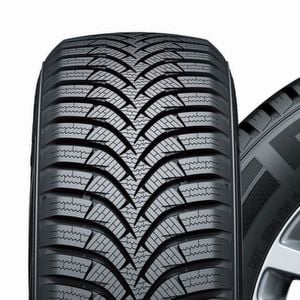Last Updated on 25.10.2024 by hrushetskyy
Tires must match rims—that’s a solid fact. But beyond the basics, questions arise: Upsizing? Downsizing? Perfect combos for specific needs? Our expert dives deep, answering all your tire-and-rim matching questions and providing simple guidance for a perfect fit.
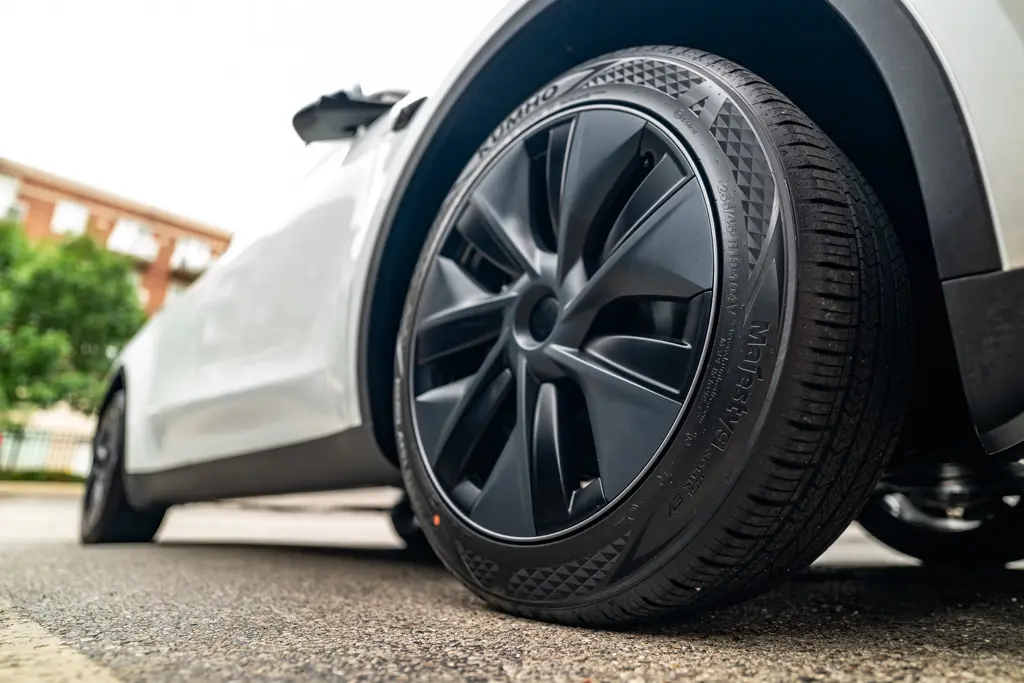
A Perfect Fit: The Utires Guide to Matching Tires with Rims
No matter your reason for reading this—whether you’re buying new tires for the changing seasons, seeking enhanced off-road performance, planning an RV trip with heavy loads, or simply need a new look for your passenger car with new wheels—the question “What tires can fit my rim?” is key.
We could end right here by telling you to check the manufacturer’s requirements on the rim itself and go for it, but it’s not as simple as that. Tire and rim compatibility affects the vehicle’s handling, braking, and acceleration, as well as headlight aiming, consistent vehicle height, and correct speedometer readings. Read our “What tires fit my rim?” guide and stay safe on the road!
Matching rims and tires: the essentials
Safety first!
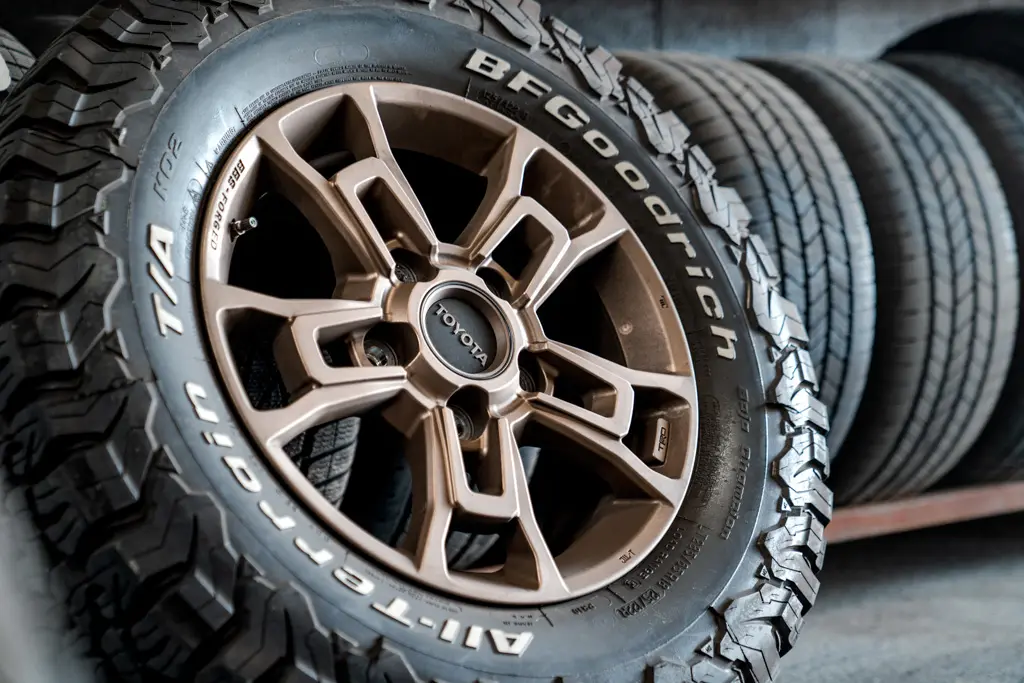
Compatible tire and rim fitment is a fundamental aspect of safe driving. Your car needs to perform optimally to deliver its intended capabilities.
Not sure what tires fit your rim? Check the standards
Tires are designed to be used on rims that conform to the standards set by the Tire and Rim Association. Check its Yearbook for the detailed dimensions and contours for wheels and rims that are approved for each particular tire size and type.
For example, for a tire with P205/55R16 markings, the TRA-approved rim widths are 5.50″, 6″, 6.50″, 7″, and 7.50″. These dimensions are standardized for size and contour. The specific tire and rim combinations are designated for properly mounting and fitting the tire to the rim.
Upgrade your rims smartly
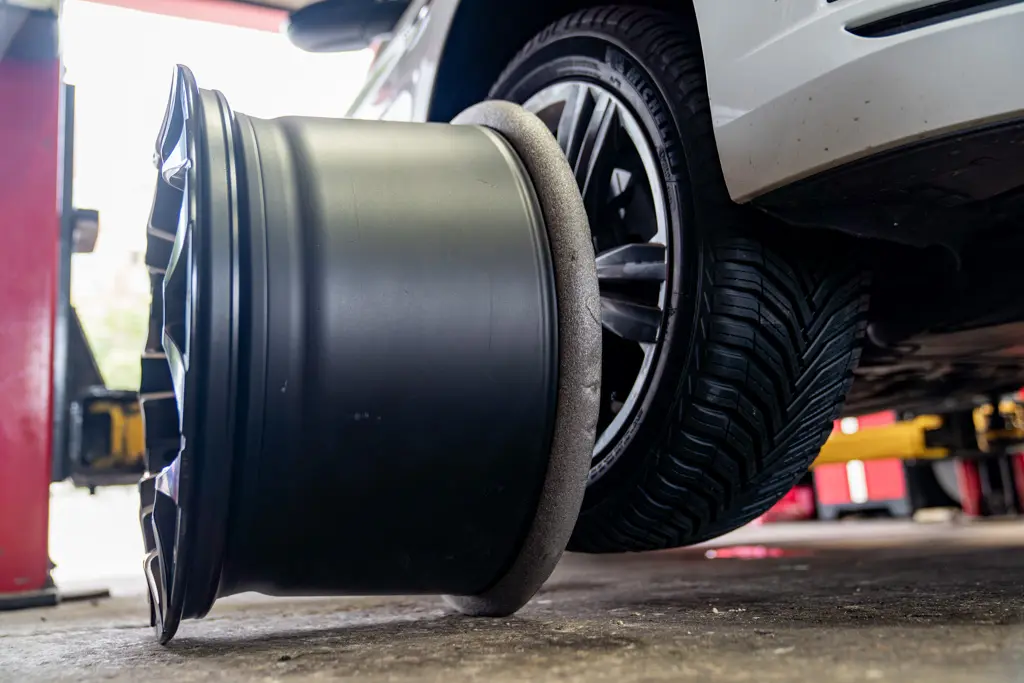
Yes, it is possible to up- or downsize rims. But it has to be done smartly! Improperly matched wider rims can cause a tire to be pinched, potentially leading to increased wear and a higher risk of tire failure. On the other hand, improperly matched narrower rims can result in a rounded tread, potentially reducing the contact patch and leading to worse traction and handling.
And no load is too heavy
The properly matched rim and wheel guarantee the tire’s safety and effectiveness under load and at various inflation pressures. Therefore, considering a tire’s load index is essential. It determines the manufacturer’s recommended load ranges for properly inflated tires and defines their safe carrying capacity. This is especially important for heavier vehicles like SUVs, which require tires with a higher load index than sedans.
Destination+designation=the key
Always buy new tires for your car’s intended use! For example, light truck tires are specifically designed for vehicles capable of carrying heavy cargo or pulling trailers. High-performance tires have higher speed ratings and compound stiffness than standard tires. If they aren’t matched appropriately to the vehicle (installed on a regular car for daily commute), the handling and safety would be compromised! Besides the basic designation, always consider the season, driving conditions, and terrain.
On all fours
Every car is engineered to function optimally with four tires of the same size, construction, and tread design. Unless it is explicitly designed to accommodate different sizes at the front and rear. For optimal performance, the tread width should match the wheel width. Mismatched tire styles and tread compounds can result in varying slip angles, potentially causing unpredictable handling or loss of control during sudden maneuvers.
The manufacturer knows it all
As we’ve mentioned at the beginning of this article, all you need to know about matching your rims and tires is specified by the manufacturer. If you stick to their guidelines, your car’s performance will be just fine.
If you want to double-check or try unusual combos, consult a professional mechanic about your best options. The United Tires customer support is available 24/7/365. Call toll-free at 1-888-566-6214 or email us at contact@utires.com, and we’ll be happy to assist you in choosing the perfect tire and rim combo!
Understanding rim size: diameter and width
Rim size consists of two measurements: wheel diameter and width. Both parameters must be accurately matched for a proper fit. Always adhere to the manufacturer’s specifications!
Rim diameter
Imagine the rim as a well. The rim diameter is the width of that well, measured from bead seat to bead seat—the spots where your tires grip the rim. This measurement is critical and must correspond exactly to the diameter of the tire being mounted. For example, a 16-inch tire must be paired with a 16-inch rim. Mismatching these sizes can cause the tire to fail to sit properly or even explode.
Rim width
Think of the rim as a channel. The rim width is the measurement across that channel, taken between the inward-facing slopes where the tire’s beads grip tight. This width determines the tire’s footprint and affects its profile and performance. A rim’s width must align with a tire’s section width—the distance from one sidewall to another of a properly inflated and unloaded tire. This measurement is important for the tire’s structural integrity and performance characteristics.
Rim offset
Imagine the wheel sliced in half. Rim offset is the distance between the slice’s center and where the wheel meets the car’s hub. This precise measurement is critical for a perfect fitment of your tires. Incorrect wheel offset can cause the tire to be positioned so that it rubs against the vehicle, even if the wheel size has not changed.
How to alter a tire section width and rim width?
Adjusting 1/5” for each 1/2” change in rim width is necessary to properly install a tire on a rim and maintain its structural integrity and performance characteristics. For example, if a tire is designed to be mounted on a 7.5” rim, using a 6.75” or an 8.25” rim would alter the tire’s section width by approximately 0.20 inches. This could affect the tire’s contact patch with the road and its overall performance!
Important. When selecting tires and wheels for your sports car, the wheel width should closely match the width of the tire’s tread.
Mounting bigger or smaller wheels and rims
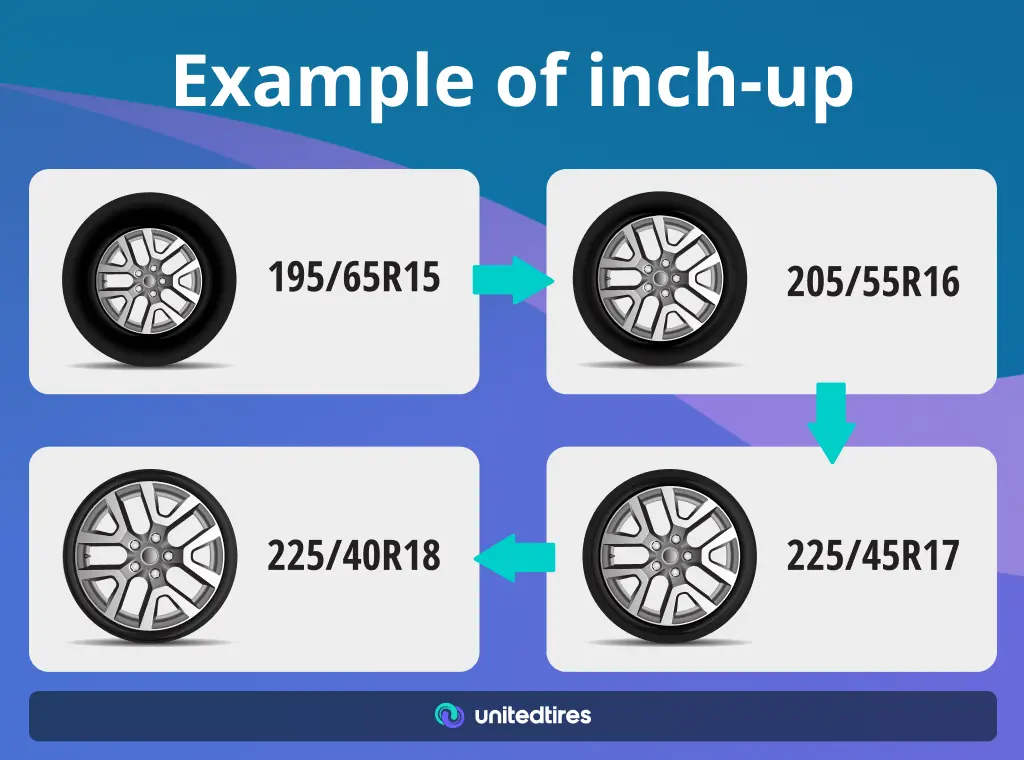
Key considerations
- When upgrading wheel size, it is essential to consider the vehicle’s suspension system, which is responsible for absorbing road impacts and ensuring ride comfort.
- Manufacturers design vehicles with specific tire dimensions. Always contact an expert to ensure that your alterations won’t compromise your car’s performance, handling, and safety.
- To mitigate issues from changing tire and rim sizes, consider calculations to keep the overall wheel size similar to stock. Consult with a tire expert to determine the best sizes for your vehicle.
- One prevalent issue when changing tire and wheel sizes is inaccurate speedometer readings due to larger tires’ altered circumference and rotation speed.
- Slight variations in tire dimensions between original equipment and aftermarket options can cause rubbing even if the sizes are nominally the same due to differences in shoulder construction and tread design.
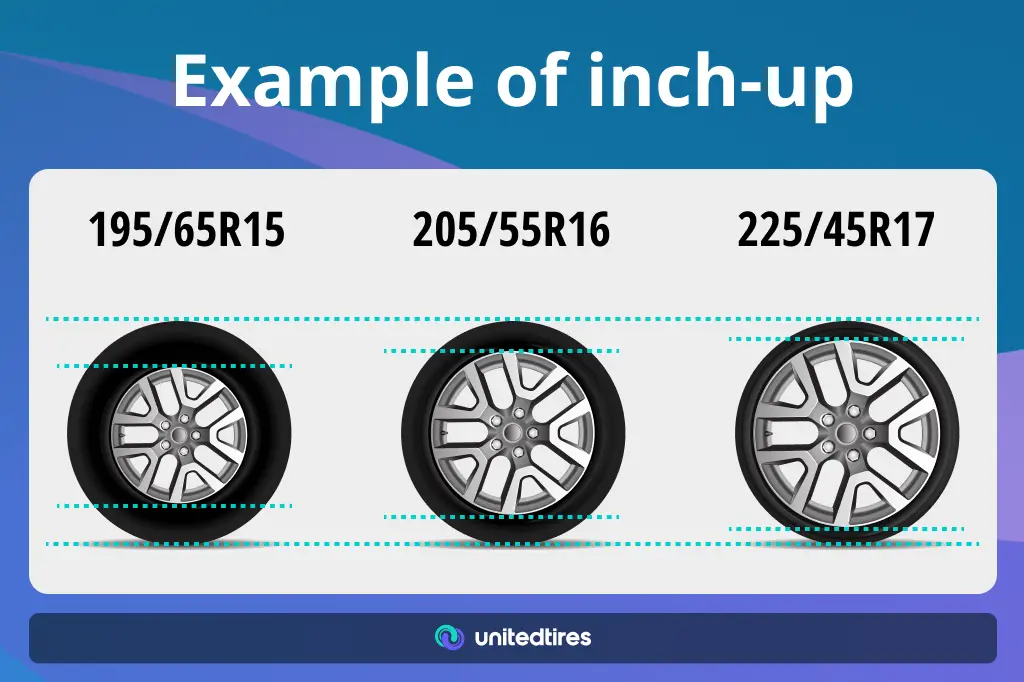
Upsizing
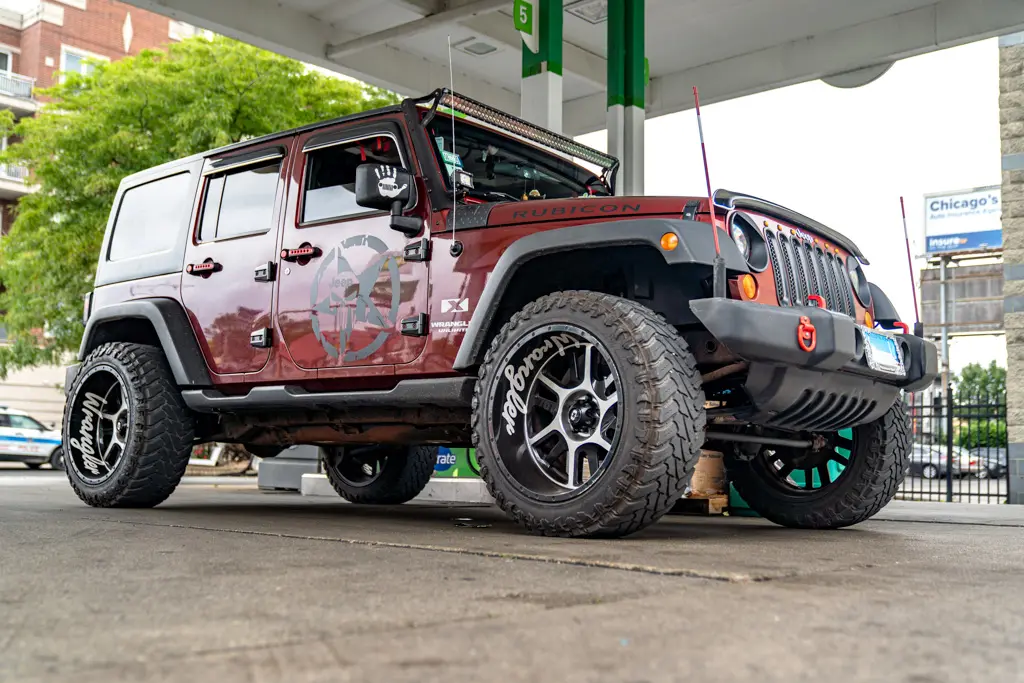
Upsizing means replacing your factory-standard tires with bigger wheels and rims. Drivers choose it to improve their car’s aesthetics and performance. If properly chosen, bigger tires can give a real wow factor. There is no better and easier way to change the car’s look than mounting bigger wheels on it.
If you put on larger wheels, your car’s grip, brakes, steering feel, and ride comfort will be affected. For instance, if you aim to install 18-inch wheels instead of 16-inch ones, it will adversely impact your speed and the car’s fuel economy due to the weight of the bigger tires. If you go higher at 19 inches and up, the benefits and advantages go away while speed and fuel economy get poorer.
Downsizing
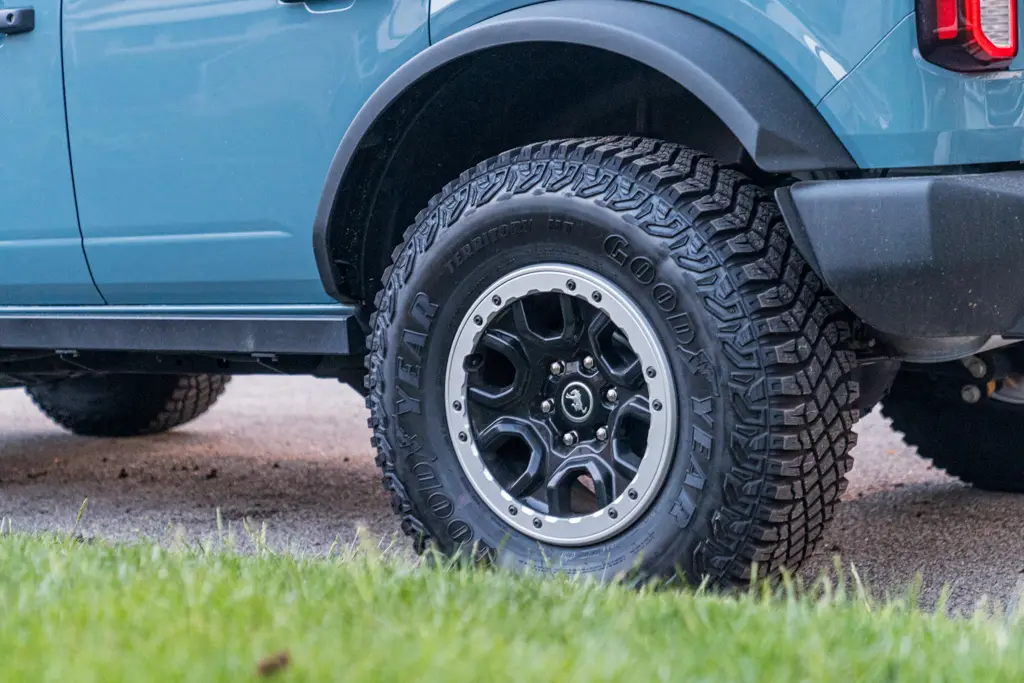
This is the opposite of getting bigger wheels, also known as downsizing, which, as the word suggests, means installing smaller tires and maintaining the diameter of the wheel. Car owners and enthusiasts do this if they have another set of tires specifically used for a particular season.
An example of this is the snow tires that are installed on cars every winter. Though they are more expensive, they are actually smaller in size, just around 17 inches. According to car aficionados and experts, choose the narrower one if you want a more efficient snow tire. For instance, if you own an 18-inch or 19-inch wheel and want to replace these with efficient winter tires, choose 16-inch or 17-inch wheels.
Pros and cons of bigger and larger tires
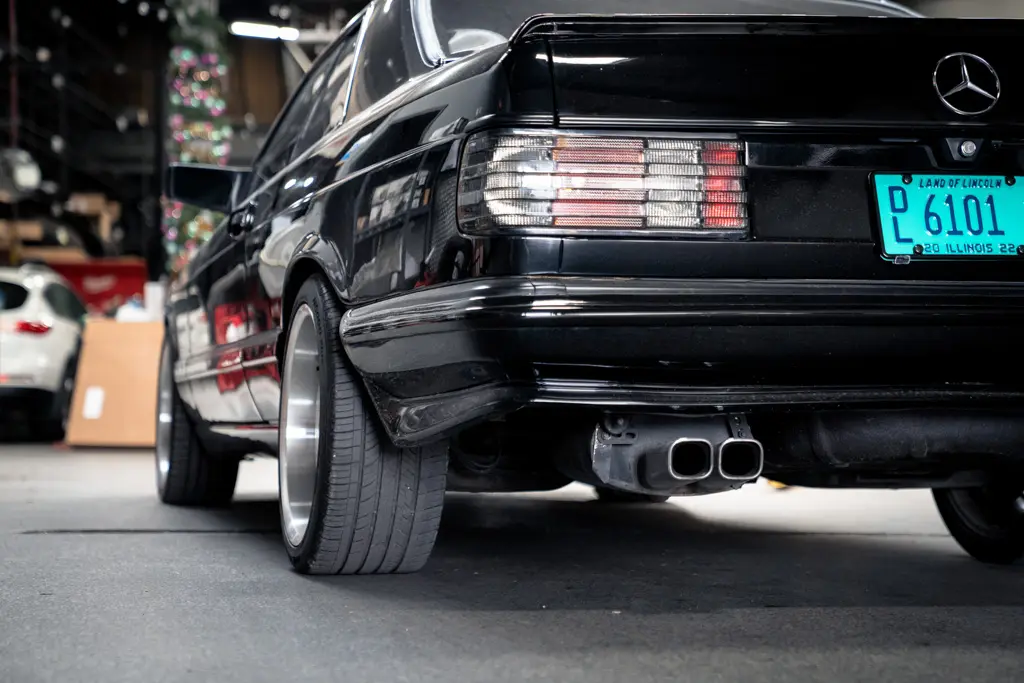
Upsizing benefits
- Larger tires can enhance a vehicle’s cornering and handling by offering better traction and grip on the road.
- Aesthetic improvements are a significant benefit of upgrading to larger and wider wheels, adding to the vehicle’s visual appeal.
- Upgrading to larger or wider wheels expands the range of tire options, which is particularly beneficial for older cars with limited original tire choices.
- Shorter decelerating distances.
- Quicker car response times and better cornering stability.
Potential drawbacks
- Large tires can change suspension angles, potentially affecting transmission gear ratios and increasing wear on suspension and brake components
- Larger wheels might compromise ride comfort by transmitting more road vibrations and noise inside the vehicle, which can lead to inaccuracies in vehicle safety systems.
- Seeking professional advice is recommended to prevent compatibility issues that could cause premature wear or damage to important vehicle components
- Higher tire worth
- Inferior water draining and reduced aquaplaning resistance.
Pros and cons of narrow tires
Pros
- Advanced resistance to aquaplaning
- Augmented driving ease and less tire noise
- Lesser tire worth/cost
- Improved driving in midwinter conditions (particularly if you’re using a winter tire)
Cons
- Reduced hold
- Inferior behavior on angles
- Lengthier braking distance
If this is too much for you, don’t fret. Just Google “tire size calculator” and use the one that is most convenient for you.
Selecting the right tires for your rims

Choose your new tires smartly. Think of them like the right shoes—they make all the difference. You don’t want to find yourself on the sand on figure skates or in flip-flops in the snow! To find a suitable tire size for your car, check the sidewall of the current tires or the inside frame of the driver’s door.
Remember to maintain the same or higher speed rating for optimal vehicle performance and speed capability when considering replacement tires. Learn when it’s safe to upsize, and when it can lead to a total disaster, when a heavier load is more than welcome, and when it’ll pop your tires.
Let’s dive deeper into the specifics of choosing the right tires for your rims.
Daily commuting vs high-performance activities
For regular daily commuting in your sedan or SUV, it is recommended that the original equipment wheel widths be maintained. In this case, avoiding unnecessary modifications makes sense. But remember that electric vehicles require specific tires that can support their increased weight due to heavy batteries, handle instant torque, and help reduce noise and rolling resistance. On the contrary, for high-performance activities, wider tires are chosen to maximize grip and handling.
Different driving conditions
Both extremely high or low temperatures impact tire rubber and directly affect tires’ performance. The demand for snow and ice traction determines softer rubber compounds. And in case you need high-heat resistance, your summer tires must be manufactured from stiffer compounds so the tires won’t “melt” on the heated surface.
Different road surfaces and terrains, from smooth highways to rough gravel roads, affect the tire wear rate and determine the need for specialized tires. At UTires, we have a large selection of highway tires, off-road tires, and all-terrain tires. Choose the ones that fit your driving needs, and contact our customer support team at 1-888-566-6214 if you need any assistance.
How to determine what size tires will fit a car?
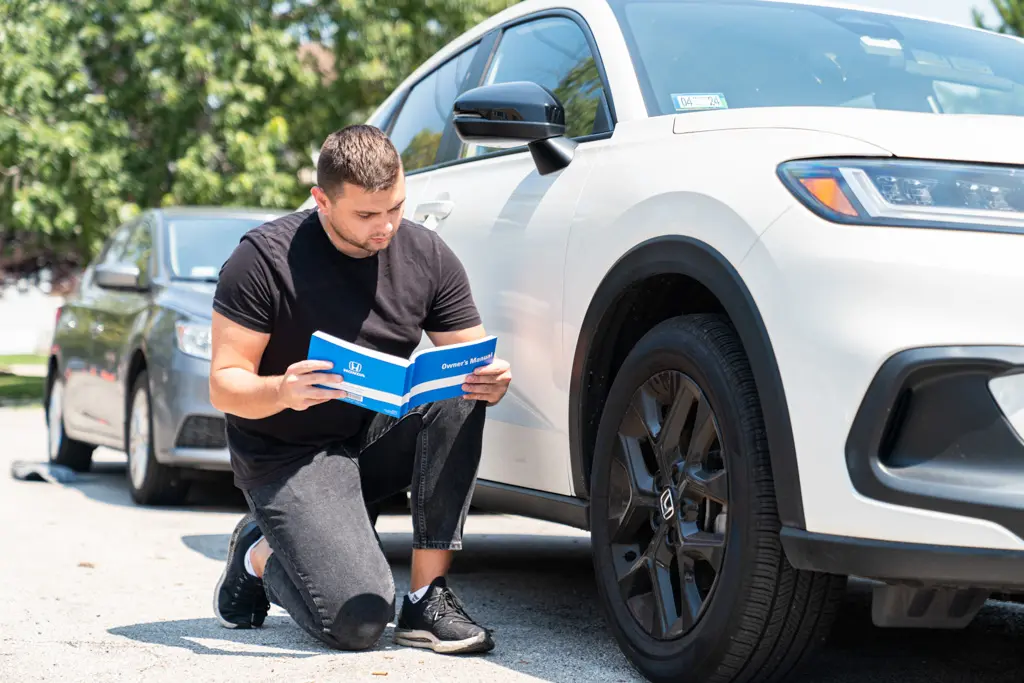
To determine the correct tire size for your car:
- Check the car owner’s manual: The owner’s manual lists the recommended tire sizes for your vehicle.
- Look at the driver’s side door sticker: A sticker on the driver’s side door jamb provides tire size information specific to your vehicle.
- Use online tire size calculators: Websites like wheel-size.com can help you find the appropriate tire size by entering your car’s make and model. When selecting a tire size, it is important to ensure sufficient clearance and avoid rubbing on suspension components.
- Contact a reliable tire shop: ask the specialists for help. Feel free to call 24/7/365 United Tires customer support at 1-888-566-6214, and we will help you match the perfect wheel size for your car.
How to use the tire size calculator?
The tire size calculator is very easy to use to determine the effects of changing your tire’s offset and width. First, enter your present tire’s width and offset. Once you’ve done this, enter your new car wheel’s offset and width and click calculate.
The calculator will show the clearance between the strut housing and the wheel’s inside and how far the external wheel edge will retract. If you lessen or lower the inner clearance too far, the wheels might not fit.
4 benefits of selecting the right tires
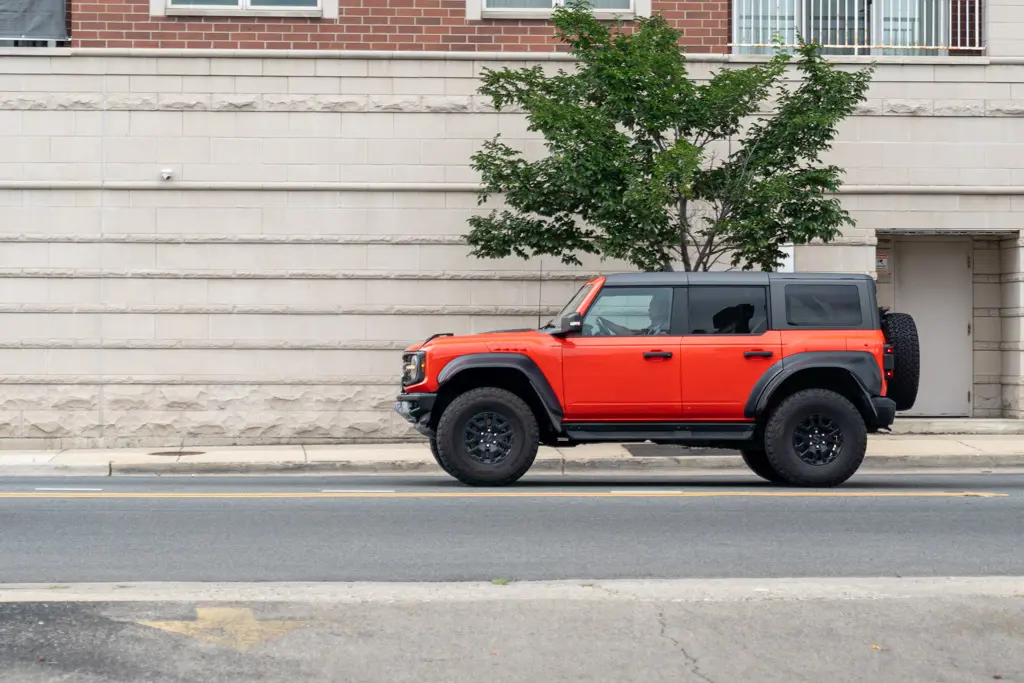
- Safety: Properly sized tires are responsible for the vehicle’s proper traction, handling, and ability to brake effectively.
- Performance: The right tires can enhance your driving experience by providing better grip, stability, and responsiveness.
- Fuel efficiency: A properly matched tire size and correct level of inflation improve fuel efficiency.
- Even wear: Correctly fitted tires will wear evenly, which can extend the life of the tires and save you money in the long run.
Decoding the wheel size
To properly match tires and rims, you must understand tire size terminology. Let’s see the meaning of prefix letters, the significance of tire width in millimeters, and the role of the aspect ratio in determining tire profile.
Prefix letters and their meanings
Prefix letters in tire size designations provide valuable information about the tire’s intended use. For example:
- “P” stands for “Passenger,” meaning that these tires are manufactured primarily for passenger vehicles—cars, minivans, SUVs, and light-duty pickup trucks.
- “LT” stands for “Light trucks,” meaning that these tires are manufactured primarily for use on light trucks—SUVs, vans, and pickup trucks that are capable of carrying heavy cargo or towing trailers.
- “T” stands for “Spare tires,” and “ST” means that these tires are manufactured for trailers.
Tire width in millimeters
The first number in the tire size sequence represents the tire width in millimeters. This measurement, known as the section width, is taken from sidewall to sidewall and is crucial as it affects your vehicle’s overall performance and handling. Wider tires tend to provide better traction and stability, which can be particularly beneficial for sports cars, while narrower tires may offer improved fuel efficiency.
Aspect ratio: determining tire profile
The aspect ratio is represented by the number after the slash in the tire sizing sequence. It represents the sidewall’s height as a proportion of its width. In other words, it describes the tire’s profile. A higher aspect ratio, such as 70, means the tire has a taller sidewall, which typically results in a more comfortable ride due to increased deflection over irregular surfaces and under heavy loads. Conversely, a lower aspect ratio, like 40, indicates a shorter sidewall, which can provide better handling and performance due to a larger contact area with the road.
Load index
The load index is a number following the rim diameter on a sidewall. It represents the weight that a properly inflated tire can safely carry. Refer to the table to find the weight corresponding to the number on your tire.
For example, a tire with a load index of 91 can carry a maximum load of 1356 pounds. It means that to find your car’s total load weight, you have to multiply 1356 by four. The result is 5,424. Never exceed the required weight, as it poses a severe safety hazard!
Speed rating
The speed rating is a single letter indicating the maximum speed at which the tire can safely carry a load corresponding to its load index. For example, “H” in the P215/55R16 91H sequence on a tire’s sidewall. In this case, the “H” signifies a speed capability of 130 mph when the tire is inflated to its maximum allowable pressure and carrying a load equal to or less than its designated maximum weight. Tires with higher speed ratings generally handle greater velocities, a feature particularly relevant for high-performance cars.
Tire construction types
Radial tires
Radial tires are characterized by ply cords extending radially from the bead to the tread, providing excellent ride comfort and wear resistance. The cords are at a 90-degree angle to the tire’s centerline, allowing for a more flexible sidewall and a flat footprint on the road. This design improves tread wear and results in better traction, lower rolling resistance, and reduced noise generation. Radial tires are also known for their retreadability and higher load-carrying capability, which can lead to better fuel consumption due to lower operating temperatures in service. However, due to their stiffer construction, radial tires may be more expensive than other types and can be less forgiving on rough or uneven surfaces.
Run-flat tires
Run-flat tires are designed to allow continued driving for a short distance, even after a puncture or loss of air pressure. They can be based on technologies such as internal support mounted on customized rims or heavy-gauge, stiff, reinforced sidewalls that maintain the tire’s load-bearing ability. This feature eliminates needing an immediate tire change or tow service, providing convenience and safety.
The drawbacks of run-flat tires include potentially less comfortable ride quality due to the stiffer sidewalls, which are necessary for the tire’s load-bearing ability when deflated. Additionally, run-flat tires can be more expensive than standard tires and may have a shorter overall lifespan due to the heat build-up from sidewall flexing under load.
ZR tires
ZR tires are high-performance tires with a speed rating of over 149 mph. They are designed for superior handling and grip in both wet and dry conditions, making them suitable for sports and high-performance vehicles.
While ZR tires offer excellent performance, they may also come with a higher price tag and may wear out faster than other types of tires due to the softer rubber compounds used to enhance grip. They may also provide a harsher ride than tires with a higher aspect ratio, as they often have a lower profile.
Bias tires
Bias Tires, aka diagonal tires, are the more traditional type. In this type, the body ply cords are arranged at angles less than 90 degrees to the tread centerline, typically forming a crisscross pattern as they extend from bead to bead. They have the edge in simplicity, offering ease of manufacture. When additional belts are introduced as belted bias tires, they provide improved wear and handling due to the added rigidity in the tread area.
With simplicity comes some downsides. Bias tires tend to generate heat due to shear between the body plies as the tire deflects, which can affect wear characteristics and lead to poorer handling 1 . Radial tires, while superior in performance, come at a cost—both in terms of actual price due to their complex construction, and in terms of rigidity, which can result in a rougher ride.
6 Factors to consider for tire and rim compatibility
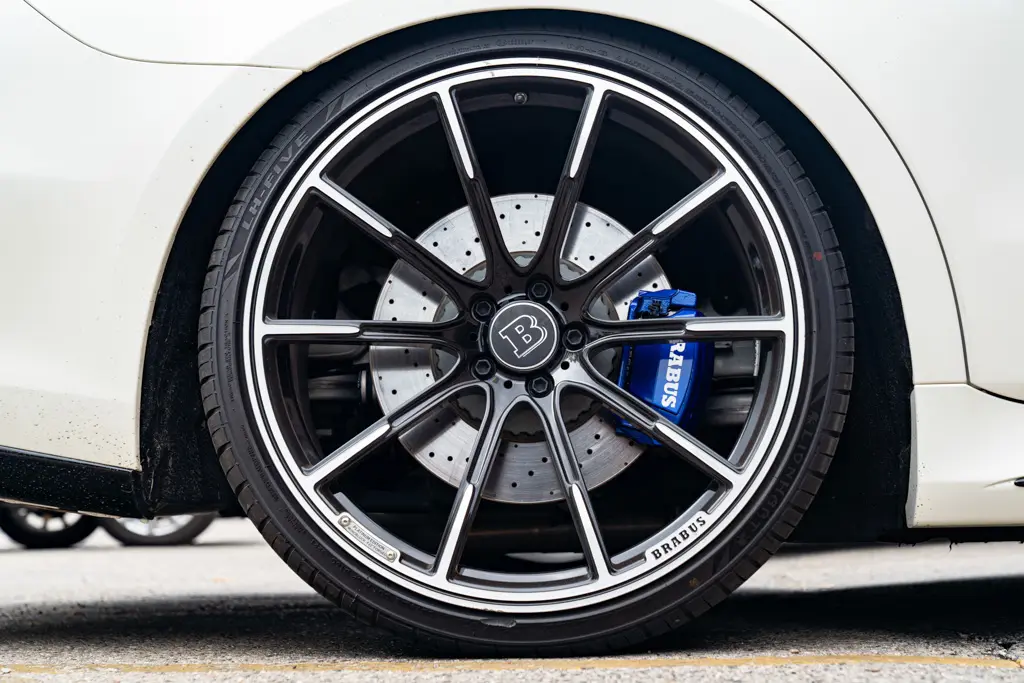
Now that we’ve learned the basics let’s sum up the key factors for tire and rim matching.
- Rim width: Using a too narrow or too wide rim can affect the tire’s shape, handling, and safety.
- Tire size range compatibility: Tires are designed to fit on rims of a certain diameter. This compatibility is indicated by the tire size, for example, 215/70 R16, where “16” means the rim diameter in inches.
- Inner rim width dimension: The rim’s inner width must be compatible with the tire’s section width to ensure proper mounting and inflation.
- Optimal performance: Refer to manufacturer specifications or the Tire and Rim Association’s guidelines for optimal combinations.
- Load index and speed rating: Your tires can only carry a particular weight at a particular speed! This is one of the most essential safety points to remember.
- Alternate rim options: Don’t experiment, but always check for the alternate rim options. They are usually listed in tire specification tables.
By following the above guide and considering these factors, you can ensure that you select the right tires for your rims, leading to a safer and more enjoyable driving experience.
If you’re uncertain about the specifications or compatibility of tires for your rims, it’s always wise to seek personalized advice from tire specialists or refer to the manufacturer’s guidelines. Remember that the United Tires customer support crew will always assist you. Call us toll-free at 1-888-6214 for a free consultation!
Frequently Asked Questions
How to measure rim diameter?
You don’t really need to measure it! The rim imprints all necessary information—diameter, width, and offset.
How does tire width affect my vehicle’s performance?
Increasing your tire width can improve grip, traction, and overall performance while reducing rolling during turns.
What is the aspect ratio of a tire?
A tire’s aspect ratio is calculated by dividing the section height by the section width and expressing it as a percentage. This helps determine the tire’s profile and performance characteristics.
What are the potential drawbacks of upsizing my tire and rim sizes?
Upgrading tire and rim sizes may result in higher rolling resistance, increased fuel consumption, and compromised ride comfort due to more road vibrations and noise inside the vehicle. Consider these potential drawbacks before making a decision.
Share the Knowledge
